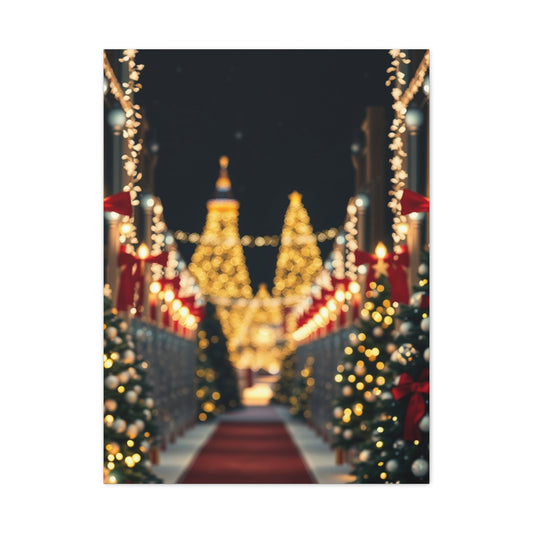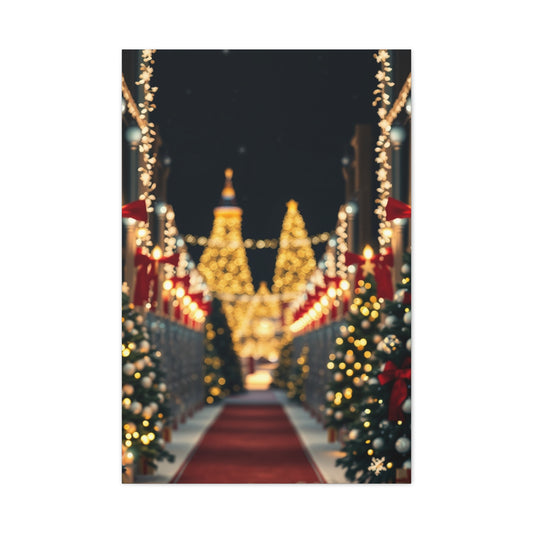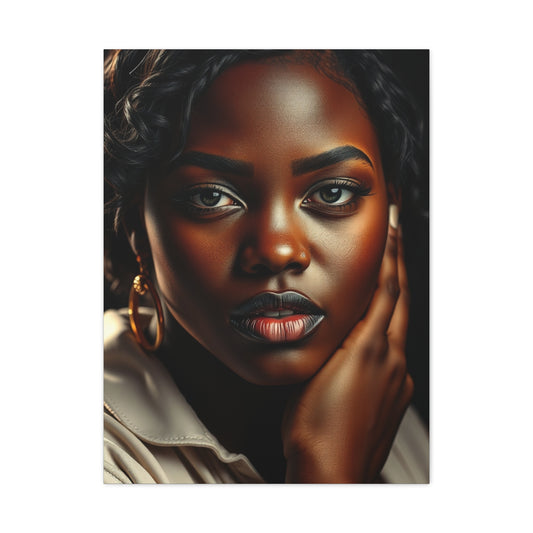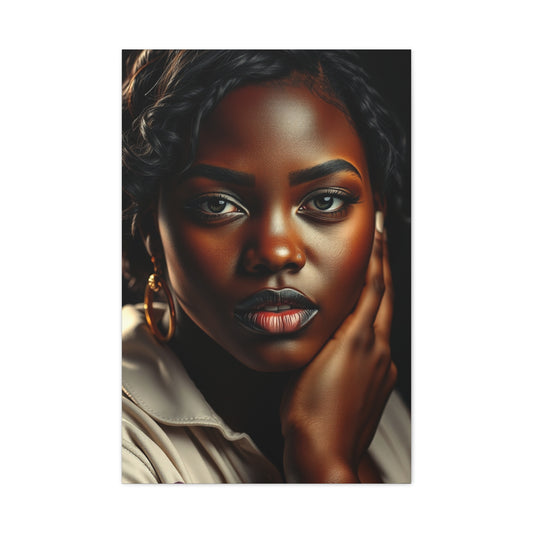Minimalist wall art transforms interiors into serene, visually captivating spaces without clutter. Emphasizing clean lines, restrained colors, and intentional placement, minimalist art enhances both aesthetic appeal and emotional well-being. This comprehensive guide explores materials, styles, placement strategies, and psychological effects, offering inspiration to create modern, harmonious, and mindful environments where every piece of wall art serves a purposeful and stylish role.
The Essence of Minimalist Wall Art
Minimalist interiors celebrate simplicity, clarity, and refinement. Wall art plays a crucial role in elevating this vision, giving rooms a visual anchor without overwhelming the space. Unlike ornate or heavily embellished decor, minimalist wall art draws focus through restraint and balance. This approach uses shapes, tones, and compositions that harmonize with the environment, rather than fighting for attention. It embodies calmness and subtle elegance, allowing every detail to breathe and resonate with intention.
A defining aspect of minimalist art is its focus on negative space. The areas left untouched are just as important as the areas that carry the design. This balance creates a rhythm between silence and presence, offering visual tranquility that mirrors the minimalist philosophy. By selecting artwork that prioritizes clarity and simplicity, homeowners can transform ordinary walls into statements of serenity.
Choosing the Right Color Palette
The foundation of minimalist wall art lies in its color palette. Neutral shades such as white, beige, and gray are common choices because they establish a sense of openness and harmony. However, neutrality does not equate to monotony. Layers of off-white, cream, and soft taupe can add depth without clutter. Muted variations of earth tones, including sandy browns or stone grays, extend a natural warmth that blends seamlessly with contemporary interiors.
For a more dynamic approach, consider the selective use of accent colors. A restrained splash of ochre, sage, or indigo can invigorate the artwork while preserving its minimalist essence. The key lies in subtlety and precision. One carefully chosen hue can establish mood and character without overpowering the entire composition. By balancing monochrome foundations with deliberate color accents, the artwork achieves both elegance and individuality.
Minimalist Typography as Wall Art
Words have the power to inspire, and minimalist typography transforms them into visual poetry. Typography wall art strips away excess embellishments and highlights the strength of concise expression. Clean fonts, ample spacing, and direct language define this style, allowing every word to resonate.
When placed in a living space, minimalist typography can serve as a daily reminder of values and aspirations. A single word like “calm” or “balance” framed against a neutral background can communicate volumes. Phrases that encapsulate encouragement or mindfulness also integrate seamlessly into minimalist interiors.
The effectiveness of minimalist typography lies in its restraint. Unlike decorative fonts or complex layouts, minimalist typography favors uncluttered alignment and clarity. Whether rendered in stark black against a white background or softened through muted tones, the impact of the message endures without visual noise.
The Role of Line Art in Minimalist Interiors
Line art is an enduring hallmark of minimalist wall design. Defined by simplicity, it uses delicate strokes to outline forms, figures, or abstractions. A single continuous line can create portraits, botanical shapes, or geometric motifs with an elegance that feels timeless.
Line art thrives on suggestion rather than detail. The beauty lies in what is omitted, leaving the viewer’s imagination to complete the image. This sense of openness aligns perfectly with minimalist interiors, where interpretation and spaciousness are central.
Hanging a series of line drawings across a hallway or a living room wall can create a gallery-like atmosphere while maintaining restraint. Complement these artworks with natural textures like light wood or stone surfaces to enhance the sense of calm and continuity.
|
Related Catagories: |
Abstract Minimalism: Shapes and Patterns
Abstract art provides another avenue to explore minimalism while still maintaining creativity. Unlike realism, which seeks to replicate life, abstraction focuses on geometry, form, and movement. Minimalist abstract wall art often incorporates circles, triangles, or blocks of color arranged in balanced compositions.
This style avoids unnecessary detail, emphasizing harmony in proportion and rhythm. A monochromatic abstract piece can establish cohesion, while geometric arrangements in muted hues create a focal point that feels modern yet subtle.
Abstract minimalism also embraces imperfection. A brushstroke that appears incomplete or a shape that fades into negative space can capture attention without disrupting serenity. The tension between precision and imperfection reflects the minimalist ethos that beauty emerges from balance and restraint.
Scaling Wall Art for Minimalist Spaces
Size plays an essential role in minimalist design. Because minimalist wall art is not overloaded with detail, larger canvases or panels can make bold yet refined statements. A single oversized piece above a sofa or dining table conveys clarity and purpose, creating a focal point that defines the entire room.
In contrast, smaller minimalist artworks work well in clusters. Arranging three or four small prints in a grid or linear sequence can introduce rhythm and flow without feeling cluttered. The spacing between each frame becomes part of the design, emphasizing airiness and structure.
It is vital to measure both the wall and the surrounding furniture when selecting sizes. Proportion ensures the artwork integrates seamlessly rather than dominating the space in an unintended way.
The Impact of Black and White Minimalism
Black and white is a timeless pairing that epitomizes minimalism. Stripped of color, this duo emphasizes contrast, form, and clarity. Black-and-white photography, for example, captures emotion through shadow and light rather than through chromatic distractions.
Similarly, minimalist sketches in black ink on white paper convey purity and directness. These artworks align with Scandinavian-inspired interiors, where simplicity and functionality reign supreme. By introducing black-and-white wall art, homeowners can achieve sophistication that feels both classic and contemporary.
Pairing monochrome artwork with natural wood furniture or soft-textured fabrics balances refinement with warmth. The sharpness of the contrast is softened by tactile elements, ensuring the space remains inviting while visually striking.
Nature-Inspired Minimalist Wall Art
Minimalism and nature share a common language of balance and simplicity. Wall art inspired by natural elements introduces tranquility into modern interiors. Botanical sketches, leaf silhouettes, and mountain outlines embody organic elegance while adhering to minimalist principles.
These artworks can be rendered in muted tones to preserve serenity, or in black outlines against a white background for stronger contrast. Nature-inspired minimalism emphasizes connection to the environment, reminding occupants of grounding forces beyond daily routines.
Hanging a simple depiction of a tree branch, a horizon line, or a ripple of water reinforces themes of calm and reflection. Such artworks resonate deeply in spaces intended for rest and contemplation, such as bedrooms or reading corners.
Creating Visual Flow Through Symmetry
Symmetry provides an anchor in minimalist wall art. Balanced compositions create a sense of stability and order, which are vital in minimalist design. Symmetrical wall art arrangements, such as two identical prints flanking a doorway or a perfectly aligned triptych, establish cohesion and visual harmony.
However, symmetry need not be rigid. Slight variations within a symmetrical framework can add interest while preserving order. For example, three frames may contain different botanical sketches but share the same size, color, and spacing. This combination balances consistency with uniqueness.
Symmetry in minimalist wall art aligns seamlessly with the broader architectural elements of a home, reinforcing order and calm.
Incorporating Texture Into Minimalist Wall Art
While minimalism often emphasizes clean surfaces, texture can enrich the experience of wall art. A canvas with subtle grain, a print on handmade paper, or artwork that incorporates raised lines offers tactile depth without overwhelming simplicity.
Texture also interacts with light, creating shadows and highlights that shift throughout the day. This natural variation introduces a dynamic quality to minimalist artwork, ensuring it remains engaging without sacrificing restraint.
When using textured art, it is essential to maintain cohesion with the surrounding space. Pair textured wall art with smooth furniture finishes or soft textiles for contrast that enhances rather than complicates the aesthetic.
Minimalist Wall Art in Communal Spaces
Living rooms and dining areas benefit greatly from minimalist wall art because these spaces are often shared with guests. The goal is to create interiors that feel welcoming yet uncluttered. A large abstract print in muted hues or a gallery of line drawings can spark conversation while preserving calmness.
Minimalist wall art in communal spaces also adapts well to different personalities. Guests with varying tastes can appreciate its understated elegance, making it a versatile choice for homes that host gatherings. The art serves as a backdrop that enhances interaction rather than dominating it.
Minimalist Wall Art for Personal Spaces
In contrast to communal areas, personal spaces such as bedrooms or home offices invite more intimate and introspective art choices. A single motivational typography print may encourage focus in an office, while nature-inspired artwork fosters rest in a bedroom.
Personal spaces allow experimentation with softer color palettes, curved forms, and delicate textures. The goal is to align the artwork with personal moods and routines, ensuring the space feels supportive and nurturing. Minimalist wall art enhances these environments by offering calm visual anchors that promote well-being.
The Psychological Effect of Minimalist Art
Minimalist wall art influences mood and perception. By reducing visual clutter, it lowers cognitive load, allowing the mind to rest and focus. The deliberate spacing, balance, and simplicity evoke feelings of calm and order, which are particularly valuable in fast-paced lifestyles.
Research in environmental psychology suggests that minimalism promotes clarity and reduces stress. Wall art that embodies these principles contributes to a healthier living environment. Whether through gentle colors, abstract forms, or clean typography, minimalist art provides mental respite in spaces that might otherwise feel overwhelming.
Minimalist Wall Art in the Kitchen
The kitchen, often referred to as the heart of the home, benefits greatly from minimalist wall art that merges function with style. Unlike living areas, the kitchen demands decor that feels light, clean, and practical. Minimalist prints with food-inspired motifs, geometric utensils, or abstract outlines of herbs can seamlessly integrate art without clashing with cabinetry and countertops.
The color scheme should remain subtle to enhance the clean environment. Black-and-white sketches of fruits or herbs provide timeless appeal, while soft green or muted yellow accents can bring freshness without dominating the palette.
For kitchens with open shelving, smaller minimalist artworks can be tucked between everyday objects. These pieces act as quiet details that create cohesion between function and beauty. The understated elegance of minimalist art prevents the kitchen from feeling chaotic, especially in spaces where appliances and tools already demand attention.
Minimalist Wall Decor in the Dining Room
Dining areas thrive on atmosphere, and minimalist wall art contributes to a setting that feels both inviting and refined. A dining room should not feel cluttered, as the primary focus lies in gathering and conversation. Minimalist artwork can emphasize this purpose by establishing calm focal points.
Consider placing a single oversized canvas along the main wall of the dining space. Abstract forms in muted tones can provide a sense of rhythm, while botanical line drawings evoke freshness that complements the dining experience. Triptychs featuring symmetrical patterns work particularly well above long dining tables, offering balance that mirrors the communal nature of meals.
In open-plan spaces where the dining room connects to the kitchen or living area, minimalist art can serve as a unifying element. Repeating shapes or tones across artworks helps visually tie the spaces together, reinforcing flow and cohesion.
Bathroom Minimalist Wall Art Ideas
Bathrooms are often overlooked in terms of decor, yet they present a prime opportunity for minimalist wall art. The bathroom thrives on cleanliness and calmness, making it a perfect canvas for serene designs.
Water-inspired artwork resonates particularly well here. Simple illustrations of waves, raindrops, or ripples can echo the purpose of the space. Monochrome sketches of shells, pebbles, or reeds add subtle texture without overwhelming the eye.
Because bathrooms are often compact, size and placement matter. A single vertical canvas can elongate walls and create an illusion of height. For larger bathrooms, pairing two small artworks side by side above a bathtub can introduce balance without clutter.
Humidity-resistant frames or prints on canvas ensure durability, allowing minimalist wall art to remain pristine in a moisture-rich environment. This ensures the bathroom remains both functional and aesthetically pleasing.
Minimalist Wall Art in the Entryway
The entryway sets the tone for the entire home, and minimalist wall art can establish a first impression of calm sophistication. Since this space is transitional, the artwork should feel welcoming yet not overwhelming.
A single geometric print placed above a console table can create a focal point that grounds the entryway. Typography prints with welcoming words, presented in understated fonts, can provide warmth without excess. For narrow corridors, panoramic canvases with simple linear designs elongate the space and create visual flow.
Mirrors framed with minimalist art-inspired outlines offer dual benefits. They expand the entryway visually while aligning with minimalist aesthetics. Paired with subtle lighting, the space exudes clarity and balance from the moment guests arrive.
Home Office Minimalist Wall Decor
As more homes incorporate dedicated workspaces, minimalist wall art becomes a tool to enhance focus. In a home office, the art should inspire productivity while maintaining calm.
Abstract geometric prints can encourage mental clarity, while monochrome line drawings prevent distraction. Motivational typography in clean fonts provides encouragement without visual noise. A single oversized artwork above the desk reinforces a sense of order and anchors the space.
Soft hues such as sage or dusty blue promote concentration, while neutral backgrounds preserve simplicity. Because home offices often accumulate functional items such as computers and papers, minimalist wall art helps counterbalance visual clutter, creating a workspace that feels controlled and serene.
Bedroom Minimalist Wall Art
Bedrooms function as retreats, making them ideal for wall art that encourages rest. Minimalist prints featuring soft gradients, abstract landscapes, or botanical silhouettes contribute to a restful environment.
Placement plays a critical role. A large canvas above the headboard creates a focal point that defines the room’s atmosphere. Alternatively, a set of two or three vertical prints can elongate walls and establish balance.
Color choice in bedroom wall art should remain tranquil. Shades of ivory, sage, lavender, or muted blush encourage calmness. Minimalist photography featuring natural scenes such as misty mountains or calm waters can evoke a sense of stillness. By combining these elements, bedrooms transform into sanctuaries defined by clarity and peace.
Minimalist Wall Art in Children’s Spaces
Minimalism in children’s rooms may seem unexpected, but it provides valuable structure and serenity. Instead of cluttered, overly vibrant decorations, minimalist wall art introduces balance and calmness. Simple illustrations of animals in outline form, geometric patterns, or abstract rainbows rendered in muted pastels create warmth without overstimulation.
For playrooms, wall art with gentle typography can introduce learning elements in a subtle way. Numbers, shapes, or alphabet prints designed with minimalist aesthetics integrate education into decor. The restrained approach prevents chaos while supporting creativity and imagination.
Minimalist Wall Art in Hallways
Hallways often act as connectors, yet they can feel neglected in design. Minimalist wall art transforms these transitional areas into thoughtful passages. Because hallways tend to be narrow, slim vertical prints or panoramic canvases enhance proportion.
A sequence of small artworks evenly spaced along the wall establishes rhythm. Black-and-white photography of architectural elements or abstract geometric patterns works particularly well in these elongated spaces. The repetition creates cohesion without overwhelming.
Lighting also plays a role in hallway displays. Spotlights or soft sconces directed at minimalist artworks create depth, emphasizing the clean lines and muted tones.
Multifunctional Spaces and Minimalist Wall Art
Modern homes increasingly incorporate multifunctional spaces such as lofts, shared living-dining areas, or flexible studios. Minimalist wall art adapts well to these environments because it establishes cohesion amid varied uses.
When decorating multifunctional areas, select artworks that feature versatile tones and abstract forms. These pieces act as unifying elements that tie together the different functions of the room. For example, an oversized abstract canvas can visually anchor a combined living-dining space, while smaller prints create continuity across adjacent areas.
Because multifunctional rooms often accommodate different moods, minimalist wall art should remain neutral and adaptable. Avoid overly specific themes; instead, rely on abstract or geometric designs that transition seamlessly between relaxation, dining, and productivity.
Seasonal Adjustments in Minimalist Wall Art
One advantage of minimalist decor is its adaptability across seasons. By swapping out artworks with subtle seasonal cues, a home can feel refreshed without dramatic changes.
For spring and summer, light botanical prints or line drawings of blossoms can introduce freshness. Autumn calls for muted earthy tones and abstract shapes resembling leaves or landscapes. Winter benefits from monochrome photography or minimalist illustrations of snow-inspired motifs.
Because minimalist wall art relies on simplicity, these seasonal transitions remain understated and cohesive. Rotating artworks within existing frames allows homeowners to maintain a sense of continuity while subtly adapting to seasonal moods.
Minimalist Wall Art in Compact Apartments
Compact apartments require careful curation of wall art to avoid overwhelming limited space. Minimalist designs are particularly effective because they emphasize clarity and restraint.
In small living rooms, a single oversized print can anchor the space without cluttering it. Vertical canvases create an illusion of height in apartments with low ceilings. For studio apartments, minimalist wall art can visually separate functional zones. A line drawing above the bed distinguishes the sleeping area, while abstract prints in the dining corner establish definition.
The restrained nature of minimalist wall art ensures that compact apartments remain open and breathable, proving that thoughtful simplicity works even in the smallest of spaces.
Materials and Finishes for Minimalist Wall Art
The choice of materials enhances the minimalist effect. Canvas prints with matte finishes reduce glare and maintain subtlety. Wooden frames in light oak or ash add natural warmth, while slim black metal frames emphasize clean lines.
Unframed prints mounted directly on the wall highlight simplicity, avoiding unnecessary embellishment. Textured paper or linen-backed canvases provide depth without introducing complexity. By carefully selecting materials, homeowners ensure that the minimalist aesthetic extends beyond the design itself to the very surface and finish of the artwork.
Integrating Minimalist Wall Art With Lighting
Lighting significantly influences how minimalist wall art is perceived. Spotlights or track lights directed at the artwork enhance clarity, while ambient lighting softens the overall effect. In communal spaces, adjustable lighting allows artworks to adapt to different occasions, shifting between functional and atmospheric.
In bedrooms, warm-toned lighting complements minimalist art by creating a tranquil mood. Bathrooms benefit from diffused lighting that highlights artwork without causing glare. The interaction between light and minimalist wall art ensures that the decor remains dynamic and adaptable throughout the day.
The Subtle Luxury of Minimalist Wall Art
While minimalist art emphasizes restraint, it can also embody understated luxury. High-quality materials, professional framing, and refined compositions create an aura of sophistication. Unlike ostentatious decor, minimalist luxury is about subtle details—a perfectly balanced composition, a frame crafted from fine wood, or a canvas with exquisite texture.
This understated refinement resonates particularly in formal dining areas, living rooms, or master bedrooms, where elegance is desired without extravagance. The result is an environment that feels both polished and tranquil, proving that minimalism can embody both simplicity and sophistication.
The Influence of Bauhaus on Minimalist Wall Art
The Bauhaus movement, which began in Germany in the early twentieth century, left a profound mark on minimalist design. Emphasizing functionality, geometry, and simplicity, Bauhaus principles continue to shape modern wall art. Minimalist artworks inspired by Bauhaus often feature bold geometric shapes—circles, squares, and triangles—arranged in balanced yet striking compositions.
What makes Bauhaus particularly relevant to minimalism is its belief that art and function should coexist harmoniously. A Bauhaus-inspired minimalist artwork may appear abstract, yet its proportions and precision establish clarity. The use of primary colors such as red, blue, and yellow can serve as subtle accents within neutral interiors, offering both vibrancy and restraint.
Incorporating Bauhaus-inspired wall art ensures that minimalist interiors retain their modernity while acknowledging an influential artistic heritage. The combination of order, clarity, and geometric harmony makes Bauhaus one of the most enduring inspirations for minimalist wall design.
Japanese Zen Aesthetics in Minimalist Wall Art
Japanese Zen philosophy embodies simplicity, balance, and mindfulness, making it a natural foundation for minimalist wall art. Zen-inspired designs often draw from natural elements, emphasizing calmness and contemplation.
Wall art rooted in Zen aesthetics may feature motifs such as bamboo, mountains, or water rendered in delicate brushstrokes. Negative space is integral, allowing the eye to rest and the mind to reflect. Soft ink washes and subtle gradients create depth without clutter.
Another hallmark of Zen minimalism is asymmetry. Unlike rigidly balanced compositions, Zen wall art embraces imperfection and organic placement, echoing the Japanese concept of wabi-sabi—finding beauty in imperfection. Hanging such artwork in spaces dedicated to relaxation, like bedrooms or meditation corners, nurtures a serene environment that encourages mindfulness and tranquility.
Nordic Simplicity and Scandinavian Design
Scandinavian interiors have long celebrated minimalism, with an emphasis on functionality, light, and comfort. Minimalist wall art inspired by Nordic design often includes muted color palettes, clean lines, and motifs from nature.
Abstract prints in soft grays, whites, and pale blues resonate strongly within Nordic-inspired spaces. Minimalist photography of forests, fjords, or snowy landscapes embodies both simplicity and connection to nature. Typography prints featuring inspiring words in understated fonts also align with the Scandinavian ethos of clarity and purpose.
The strength of Nordic simplicity lies in its warmth. Minimalist wall art in this style avoids harshness by introducing soft textures, natural wood frames, and organic imagery. The result is a tranquil environment that feels welcoming while maintaining restraint.
Mid-Century Modern Minimalist Wall Art
Mid-century modern design, though often associated with vibrant patterns, also carries minimalist elements that translate well into wall art. Clean lines, bold geometric shapes, and a focus on functionality align this style with minimalist principles.
Minimalist artworks inspired by mid-century modern design often incorporate abstract patterns in earthy tones such as burnt orange, olive green, or mustard. The compositions maintain simplicity, yet their retro flair adds subtle character.
Large, simple shapes placed on neutral backgrounds embody the mid-century modern aesthetic without overwhelming. The balance between boldness and clarity allows this style to merge seamlessly with contemporary minimalist interiors, offering a nostalgic yet modern edge.
Geometric Modernism in Minimalist Wall Art
Geometry plays a central role in many minimalist artworks, particularly those influenced by modernist movements. Geometric modernism reduces art to its most basic forms—lines, circles, and angles—arranged in ways that create harmony and intrigue.
Minimalist wall art in this style may consist of overlapping circles rendered in muted tones, or angular lines forming abstract structures. The appeal lies in clarity and proportion. By stripping away complexity, geometric artworks emphasize structure and balance, creating visual stability that resonates with minimalist philosophy.
These artworks integrate seamlessly into modern interiors where clean architectural lines dominate. They also work well in office environments, where geometric order fosters concentration and focus.
Minimalist Surrealism: A Subtle Twist
Though surrealism is often associated with elaborate and dreamlike imagery, minimalist surrealism offers a subtler approach. By paring down surrealist elements to their essence, minimalist wall art introduces intrigue without overwhelming.
Examples include simple silhouettes juxtaposed against vast empty space, or abstract dreamlike forms rendered in muted palettes. The balance between surreal imagination and minimalist restraint creates artworks that spark curiosity while maintaining calm.
Minimalist surrealist wall art works particularly well in creative spaces, encouraging reflection and interpretation. It embodies the idea that art can provoke thought without relying on visual excess.
Minimalist Expressionism: Emotion Through Restraint
Expressionism traditionally thrives on bold color and dramatic strokes, but a minimalist adaptation translates emotion into refined forms. Minimalist expressionist wall art uses restrained brushwork, muted tones, and deliberate emptiness to convey feeling.
A single sweeping stroke of ink across a blank canvas, for example, can evoke motion, tension, or serenity. The absence of detail directs focus to the emotion embedded in the gesture itself.
This style aligns with minimalism’s emphasis on essence. Rather than distracting with excess, minimalist expressionism channels raw emotion into clarity, offering depth and resonance in simple forms.
Minimalist Photography
Photography holds a unique place in minimalist wall art because it captures reality with precision while allowing interpretation. Minimalist photography often emphasizes negative space, symmetry, and simplicity. A lone tree in a vast landscape, an isolated building against the sky, or a single ripple on water exemplify this style.
Black-and-white photography heightens the minimalist effect, removing distractions of color and focusing on texture, light, and composition. Muted color photography can also maintain simplicity, particularly when emphasizing natural tones or architectural forms.
Minimalist photography fits effortlessly in both modern and traditional interiors, offering timeless clarity that complements a wide range of spaces.
Minimalist Typography Across Cultures
Typography as minimalist wall art draws inspiration from diverse cultures. Scandinavian typography favors simplicity and functionality, while Japanese calligraphy embodies fluid motion and mindfulness. Western modernist typography emphasizes geometric precision, and contemporary global trends experiment with negative space and bold minimal fonts.
Each cultural interpretation of minimalist typography provides unique flavors of clarity. Whether through clean sans-serif letters or fluid ink characters, the result remains consistent: communication through restraint. These artworks suit spaces where words inspire reflection, such as home offices, studies, or entryways.
Minimalist Botanical Art
Minimalist wall art often draws inspiration from plants, yet styles vary widely depending on cultural influence. Japanese sumi-e painting uses fluid brushstrokes to depict bamboo or plum blossoms with simplicity and grace. Scandinavian botanical prints feature line drawings of ferns, leaves, or flowers in monochrome or muted tones. Contemporary botanical minimalism may focus on abstract leaf shapes or stylized silhouettes.
What unites these variations is their connection to nature and their emphasis on clarity. Botanical wall art serves as a reminder of organic beauty within minimalist interiors, grounding spaces with quiet elegance.
Minimalist Cubism
Cubism, pioneered by Picasso and Braque, deconstructed objects into geometric forms. Minimalist cubism simplifies this approach further, reducing compositions to a handful of shapes and colors.
Minimalist cubist wall art may feature abstracted human forms or still lifes rendered in muted palettes, with sharp angles and overlapping planes. The reduction of detail aligns with minimalist aesthetics, while the cubist influence introduces depth and intellectual intrigue.
This style suits interiors seeking both simplicity and artistic sophistication, making it ideal for gallery-inspired living rooms or creative studios.
The Role of Monochrome in Minimalist Art Movements
Monochrome artworks transcend specific styles, embodying purity and clarity. Whether in Bauhaus-inspired geometry, Zen brushstrokes, or modernist abstraction, monochrome remains a unifying feature. A single color—black, white, or a muted tone—provides focus and cohesion.
Monochrome minimalist wall art resonates strongly in spaces where distraction must be minimized. It emphasizes form and proportion over decoration, highlighting the essence of each style.
Fusion of Styles in Contemporary Minimalist Wall Art
Contemporary minimalist wall art often blends influences from multiple movements. A single artwork may incorporate Bauhaus geometry, Zen-inspired negative space, and Nordic simplicity. This fusion creates designs that feel modern yet timeless, appealing to diverse tastes.
Such artworks reflect the global nature of design today, where cultural and historical influences intersect. The result is minimalist wall art that honors tradition while embracing innovation, ensuring its relevance across varied interiors.
The Emotional Impact of Style on Minimalist Wall Art
Each style within minimalist wall art influences mood differently. Bauhaus geometry introduces clarity and structure. Zen-inspired art fosters peace and mindfulness. Nordic simplicity encourages warmth and comfort. Minimalist surrealism provokes curiosity, while expressionism channels emotion.
By selecting artworks aligned with desired moods, homeowners can curate interiors that not only look refined but also feel intentional. Minimalist wall art thus becomes more than decor—it becomes a medium for emotional resonance.
The Role of Materials in Minimalist Wall Art
Materials play a crucial role in shaping the overall character of minimalist wall art. Unlike maximalist creations that thrive on layering and embellishment, minimalist art often relies on material integrity. The selection of canvas, wood, metal, paper, or textiles determines the weight, tactility, and emotional resonance of a piece. By working with materials in their purest form, artists highlight authenticity, texture, and form without distraction.
Minimalist artworks often emphasize the rawness of surfaces. A simple white canvas with one deliberate stroke, a wooden panel with clean carvings, or a brushed metal sheet with etched lines demonstrates how material choice is inseparable from artistic intention. Through careful material selection, minimalist art reinforces its philosophy of “less, but better.”
Canvas as a Timeless Foundation
Canvas remains the most traditional surface for minimalist wall art. Its versatility and subtle texture provide an excellent foundation for painting, drawing, or mixed media. Minimalist artworks on canvas frequently embrace large areas of negative space, interrupted by a single geometric shape or restrained color field.
Artists often choose unprimed or lightly primed canvas to emphasize texture. Neutral tones such as off-white, beige, or soft gray allow shapes and strokes to stand out clearly. Stretched canvas frames also create a sense of structure, aligning with minimalist design principles.
Canvas-based minimalist art works well in both modern apartments and traditional interiors, offering balance between timeless craft and contemporary restraint.
Wooden Surfaces for Organic Minimalism
Wood introduces warmth and natural grain patterns, making it a compelling choice for minimalist wall art. Artists often preserve the organic qualities of wood rather than concealing them. A panel of oak, birch, or walnut may serve as the background for simple engravings, line drawings, or laser-etched patterns.
The appeal of wood lies in its ability to balance minimalism with natural character. Smooth, polished wood offers a refined aesthetic, while rougher textures add a rustic yet understated dimension. Minimalist wall art created from wooden surfaces feels grounded and tactile, echoing the connection to nature often found in Scandinavian or Japanese-inspired interiors.
Additionally, wooden frames used with minimalist prints further enhance subtlety. Thin, matte finishes or natural edges keep attention on the artwork while harmonizing with minimalist decor.
Metal for Industrial Minimalism
Metal introduces a sleek, industrial edge to minimalist wall art. Materials such as aluminum, steel, and brass allow for clean lines, sharp edges, and durable finishes. Artists often work with metal sheets, cutting geometric patterns or embossing subtle textures that reflect light differently depending on the viewing angle.
Polished surfaces enhance clarity, while brushed finishes create a softer, more understated appearance. Minimalist sculptures mounted on walls or large-scale metal panels etched with fine lines embody strength and simplicity simultaneously.
The cool tones of metal artworks fit seamlessly into modern lofts, offices, or urban-inspired interiors, creating bold statements without excessive decoration.
The Subtlety of Paper in Minimalist Wall Art
Paper may appear fragile, yet its versatility makes it a powerful medium in minimalist art. Handcrafted paper with visible fibers provides a subtle texture that enhances the purity of a design. Origami-inspired folds, simple ink sketches, or cut-out silhouettes can transform paper into elegant wall art.
Minimalist collages often rely on paper’s flexibility, layering subtle tones and shapes while maintaining simplicity. White-on-white compositions, where cut shapes create shadow play, emphasize depth without relying on color.
The accessibility of paper also democratizes minimalist wall art, making it approachable for both professional artists and DIY enthusiasts. Framed paper-based artworks highlight delicacy and restraint, offering a quiet sophistication suitable for intimate interiors.
Textiles and Fabric-Based Minimalism
Fabric introduces softness and tactile warmth into minimalist wall art. Linen, wool, cotton, or silk can be stretched, woven, or embroidered to create understated yet striking pieces. Minimalist textile art often involves monochrome weaves, geometric stitching, or subtle layering of fabrics.
Natural fibers in muted tones highlight texture over color, reinforcing the minimalist ethos of clarity and simplicity. A linen wall hanging with linear embroidery or a woven tapestry in neutral shades adds depth without visual clutter.
Textile-based minimalist art resonates particularly well in spaces that benefit from acoustic softening, such as bedrooms or lounges. The combination of tactility and restraint creates harmony between visual and physical comfort.
Stone and Concrete Surfaces
Though less conventional, stone and concrete surfaces have found their place in minimalist wall art. Their raw, elemental textures resonate with the minimalist philosophy of authenticity. Concrete slabs with etched lines, polished marble panels with subtle veining, or slate tiles arranged into geometric patterns provide a sense of permanence and stability.
Minimalist stone artworks often lean on symmetry and proportion rather than ornament. Their weight and durability make them ideal for large spaces such as lobbies or open-plan living areas where they can serve as focal points without overwhelming the environment.
The neutral gray tones of concrete or the soft hues of limestone create understated elegance that blends seamlessly with modern interiors.
Glass and Transparency in Minimalist Design
Glass introduces transparency and lightness, offering a unique perspective in minimalist wall art. Artists often etch, frost, or paint directly on glass to create compositions that interact with surrounding light. Transparent layers emphasize depth without bulk, reinforcing the idea of openness and clarity.
Glass wall panels or minimalist stained-glass pieces, featuring muted tones and clean lines, highlight both fragility and strength. They work particularly well in bright spaces where natural light enhances their subtle variations.
The reflective nature of glass also complements minimalist interiors, echoing light and amplifying spatial openness.
Ceramics and Clay for Textured Minimalism
Ceramic and clay artworks contribute tactile richness to minimalist wall design. Handmade tiles arranged in orderly grids or monochrome clay reliefs provide subtle depth and character. The slight irregularities of handmade ceramics celebrate imperfection, aligning with the minimalist embrace of authenticity.
Clay-based artworks often feature natural earth tones—beige, terracotta, or soft gray—bringing warmth and grounding to minimalist interiors. Matte finishes emphasize texture, while glossy glazes add refinement.
These artworks merge craft and simplicity, bridging the gap between traditional handmade techniques and modern minimalist sensibilities.
Techniques in Minimalist Wall Art Creation
Beyond materials, techniques also determine the impact of minimalist artworks. The process of crafting often emphasizes reduction, precision, and intentionality. Techniques such as line drawing, negative space utilization, engraving, embossing, and monochrome painting dominate minimalist practices.
Artists frequently explore layering while maintaining restraint—such as overlapping translucent shapes or carving subtle grooves. Minimalist printmaking, with its controlled repetition, also highlights discipline and balance. Digital techniques, on the other hand, allow for precise geometric creations that embody the clarity associated with minimalism.
The unifying principle across techniques is intentionality: every mark, fold, or texture must serve a purpose, reinforcing the clarity that defines minimalist aesthetics.
Handcrafted Minimalist Wall Art
Handmade minimalist wall art holds a distinct charm due to its authenticity. The imperfections of brushstrokes, irregularities of hand-carved wood, or uneven textures of clay remind viewers of the human touch. These subtle nuances emphasize individuality without cluttering the composition.
Handcrafted techniques such as block printing, calligraphy, embroidery, or wood carving lend intimacy to minimalist designs. Artists often use restrained palettes and simplified motifs, focusing on precision and clarity.
Displaying handcrafted minimalist wall art fosters connection with artistry while maintaining aesthetic simplicity. The result is both personal and refined.
Digital Minimalist Wall Art
Digital tools expand the possibilities of minimalist wall art. Software enables artists to craft precise geometric shapes, manipulate negative space, and explore symmetry with mathematical accuracy. Digital minimalism often involves flat color fields, vector-based designs, and dynamic gradients reduced to their simplest form.
Digital works can be printed on canvas, metal, or acrylic, allowing flexibility in presentation. Interactive minimalist digital art, projected onto walls, introduces movement while retaining restraint.
The adaptability of digital minimalism ensures it suits modern interiors where technology and design converge. Its clarity and reproducibility make it especially popular in contemporary urban settings.
Mixed Media in Minimalist Wall Art
While minimalism thrives on reduction, mixed media offers opportunities to experiment with textures while preserving clarity. Combining materials such as wood and fabric, or paper and metal, results in artworks that maintain restraint yet introduce dimensionality.
For example, a canvas featuring a single geometric fabric patch or a wooden panel with embedded metal lines can embody minimalism while adding depth. The secret lies in restraint—limiting the number of materials and focusing on harmony rather than complexity.
Mixed media minimalist wall art creates subtle intrigue without compromising simplicity, making it ideal for interiors that embrace both tradition and innovation.
Large-Scale Minimalist Wall Art
Scale influences the perception of materials and techniques. Large minimalist wall art often amplifies simplicity, transforming empty spaces into focal points. A massive canvas featuring one bold line, a metal panel etched with precise geometry, or a textile tapestry with monochrome stitching demonstrates how size enhances impact.
Large-scale minimalist art benefits open-plan interiors, lofts, or galleries where expansive walls require grounding. By using restrained compositions, these artworks achieve grandeur without visual overload.
The material—whether canvas, metal, or wood—must be carefully chosen to sustain scale while retaining clarity.
|
Related Catagories: |
Small-Scale Minimalist Wall Art
Equally important are small-scale minimalist artworks, which emphasize intimacy. A small paper sketch framed delicately, a hand-embroidered textile piece, or a minimalist ceramic tile arrangement creates focal points in compact spaces.
Small artworks often rely on subtler details—textures, brushstrokes, or grain patterns—to capture attention. Their quiet presence suits personal spaces such as reading corners, hallways, or workstations where serenity and restraint are desired.
The contrast between large and small minimalist artworks highlights how materials and techniques can adapt to varied spatial needs.
The Interaction of Light and Material
Lighting profoundly affects the perception of minimalist wall art. The texture of wood, the sheen of metal, or the translucency of glass responds uniquely to light. Minimalist artworks often exploit this interaction, creating shifting experiences throughout the day.
Directional lighting can highlight grooves in ceramics or emphasize shadows cast by layered paper. Natural light, filtered across textured surfaces, enhances subtlety and depth. The dialogue between light and material ensures that minimalist wall art never feels static but evolves with its environment.
Sustainability in Material Choice
Sustainability has become increasingly important in minimalist wall art. Artists and collectors often prioritize materials that are responsibly sourced, recycled, or biodegradable. Reclaimed wood, recycled metal, handmade paper, or natural fibers align with both environmental values and minimalist principles.
By emphasizing authenticity and reduction, minimalist wall art naturally complements sustainable practices. Choosing eco-friendly materials ensures that the art embodies not only simplicity but also responsibility.
Placement as a Design Language
Placement is not just about hanging a piece on the wall—it’s about orchestrating balance within a room. Minimalist wall art thrives on intentional positioning. Every inch of empty space surrounding a piece matters as much as the artwork itself. This dialogue between emptiness and presence creates the calm elegance for which minimalism is known.
A centered composition can anchor a room, while an off-center placement might introduce gentle tension. Minimalist interiors benefit from both approaches depending on the mood desired. A centered placement emphasizes harmony, whereas asymmetry adds intrigue without overwhelming simplicity.
When selecting placement, consider not only the wall but also its relationship with nearby furniture, light sources, and architectural features.
Scale and Proportion in Minimalist Wall Art
Scale transforms minimalist wall art from an accessory into an integral design element. Oversized artworks, often dismissed in cluttered spaces, thrive in minimalist environments. Their simplicity prevents visual chaos while their size establishes authority.
The rule of proportion plays an essential role: wall art should relate directly to surrounding furniture. For instance, a piece above a sofa should generally span two-thirds of its width. Over a bed, it should complement the headboard without extending excessively. This proportional dialogue creates cohesion between art and architecture.
Smaller pieces, by contrast, invite intimacy. They demand closer inspection, encouraging viewers to notice subtle textures and delicate details. Pairing small works in deliberate arrangements allows them to collectively fill a space while retaining individual restraint.
The Power of Negative Space
Minimalism thrives on negative space—the empty areas surrounding an artwork. In wall art placement, negative space frames the piece, amplifying its presence. A small artwork isolated on a vast wall may appear more striking than one surrounded by competing decor.
Spacing between artworks in gallery-style arrangements also matters. Generous gaps allow each piece to breathe, while tight spacing can disrupt the serenity minimalism demands. The balance between presence and absence is fundamental to curating minimalist interiors.
Alignment and Symmetry
Alignment creates subtle order within minimalist spaces. Hanging art at eye level remains a timeless rule, but minimalism often bends conventions to create distinctive atmospheres. Aligning multiple pieces along a horizontal axis reinforces calmness, while vertical arrangements elongate the perception of height.
Symmetry contributes to tranquility. Two identical pieces placed equidistant from a central point produce harmony ideal for bedrooms or meditation spaces. Yet, asymmetry has its place—especially when paired with negative space. A solitary piece slightly offset can suggest fluidity without clutter.
Interacting with Architecture
Architecture and minimalist wall art must converse. The position of doors, windows, beams, or alcoves dictates placement opportunities. Placing artwork across from a large window can maximize natural light, making subtle colors glow.
In hallways, narrow vertical canvases complement elongated proportions, while panoramic works accentuate wide living rooms. Minimalist art should highlight architectural features rather than compete with them. When art mirrors structural lines—like a rectangular canvas echoing a window’s shape—it reinforces unity.
Placement Above Furniture
Furniture and wall art share a symbiotic relationship. Art above sofas, beds, dining tables, or consoles becomes part of the furniture’s narrative. The distance between furniture and artwork is critical: too high, and the connection feels broken; too low, and the two may feel cramped.
For most minimalist interiors, a gap of 6–12 inches between the top of furniture and the bottom of artwork maintains proportion. This interval creates visual breathing space while preserving connection. In dining areas, lower placement allows seated guests to engage with the art without strain.
Gallery Walls in Minimalist Interiors
While gallery walls are often associated with eclectic styles, minimalist interpretations exist. The key lies in restraint. A grid of identical frames, aligned with precision, conveys order without clutter. Alternatively, a set of line drawings with ample spacing creates rhythm while maintaining clarity.
Uniformity in frame size, color palette, or subject matter ensures that gallery walls retain minimalist discipline. Placement in strict alignment reinforces the sense of structure.
Vertical vs. Horizontal Orientation
Orientation dictates visual flow. Horizontal artwork expands a room’s sense of width, making it feel more spacious. Vertical pieces, on the other hand, emphasize height and introduce elegance.
In minimalist interiors, choosing orientation based on architectural needs enhances coherence. A panoramic piece elongates a narrow hallway, while a tall canvas emphasizes high ceilings. Combining orientations requires careful planning, ensuring they complement rather than compete.
Layering and Depth in Placement
Minimalist wall art can also create depth when strategically layered. A floating shelf displaying a framed line drawing slightly overlapping another piece introduces dimension without adding clutter. This subtle layering plays with spatial perception while adhering to simplicity.
Depth may also be achieved by positioning art in relation to shadows. A wall sculpture casting soft lines under angled lighting becomes part of the spatial composition. In minimalism, layering does not mean excess but rather controlled complexity.
Interaction with Light
Light transforms minimalist wall art placement. Direct natural light enhances textures, while indirect light preserves subtle hues. Wall-mounted lighting fixtures, such as slim picture lights, can spotlight specific works, elevating their importance.
Strategic placement near windows ensures dynamic interaction as daylight shifts. For artworks sensitive to light, placement in softly lit corners prolongs preservation while sustaining serenity.
Artificial lighting allows more control. Warm lights enhance wooden textures, while cool lights accentuate metal or monochrome artworks. The placement of wall art relative to lighting sources ensures that it never appears flat but remains alive with subtle interplay.
Minimalist Wall Art in Transitional Spaces
Hallways, entryways, and staircases often serve as transitional zones. Minimalist wall art in these areas requires thoughtful placement to avoid visual congestion. Narrow hallways benefit from single vertical pieces spaced at intervals, guiding movement gently.
Entryways are ideal for bold but restrained statements—a solitary oversized piece can set the tone for the home’s minimalist ethos. Staircases present opportunities for rhythmic placement, such as a series of artworks ascending alongside the steps, maintaining proportional alignment.
Focal Points and Visual Anchors
Minimalist wall art often functions as a focal point within a room. Placement dictates whether the piece anchors the eye or blends into the background. Positioning artwork centrally above a fireplace, sofa, or console creates immediate visual anchoring.
Alternatively, placing art in less expected locations—such as low near the floor or high above typical sightlines—introduces subtle intrigue. These unconventional placements work best in minimalist interiors, where surrounding emptiness ensures clarity rather than chaos.
Relationship Between Multiple Artworks
When displaying more than one piece, placement determines the dialogue between them. Minimalist interiors favor deliberate spacing to highlight individuality while maintaining coherence. Two artworks hung side by side at equal height create balance, while staggered placement introduces rhythm.
Triptychs exemplify minimalist coherence. Three aligned canvases separated by equal spacing create structured flow. Placement decisions should ensure unity across multiple works without diluting the sense of restraint.
Wall Art in Open-Plan Interiors
Open-plan spaces pose unique challenges for wall art placement. Without clear room divisions, art must act as both decoration and subtle boundary marker. Oversized pieces can define functional zones, such as a dining area or lounge, without physical partitions.
Placing minimalist wall art behind seating areas anchors them as distinct spaces. In kitchens or dining zones, restrained compositions prevent visual clutter in already active environments. Placement thus becomes a tool for zoning while maintaining openness.
Height Considerations Beyond Eye Level
The traditional rule of hanging at eye level suits most scenarios, but minimalism invites experimentation. Lower placements can create intimacy, drawing viewers to engage more personally with the work. Higher placements, on the other hand, emphasize grandeur and spatial extension.
For example, a large vertical piece placed slightly higher elongates a wall, enhancing the sense of loftiness. A small piece placed unusually low encourages contemplative interaction, especially in private settings. These subtle deviations elevate minimalism beyond formulaic arrangements.
Wall Art in Compact Spaces
In smaller interiors, placement becomes even more crucial. A single oversized piece may dominate effectively without overcrowding. Alternatively, one or two small artworks with ample surrounding space can make compact rooms feel larger.
Strategic placement opposite mirrors or near light sources amplifies spaciousness. By carefully curating placement, even the smallest areas can maintain serenity without feeling empty.
Seasonal Rearrangement of Placement
Minimalist interiors embrace flexibility. Rearranging wall art placement seasonally can refresh a room without introducing excess decor. Shifting an artwork from above a sofa to a hallway alters the visual rhythm of both spaces.
Rotating placements allows artworks to interact with different lighting conditions across the year. In summer, a piece near bright windows may glow with daylight; in winter, placed closer to artificial light, it acquires a different character. Such rearrangements sustain novelty within a minimalist ethos.
Placement and Psychological Effect
Placement influences how occupants psychologically perceive space. A centered piece above a bed conveys stability, ideal for restful environments. Off-center placement in living rooms stimulates curiosity, encouraging conversation.
Artworks placed at entryways establish first impressions, while those in workspaces influence focus. Placement decisions extend beyond aesthetics—they shape emotional atmospheres. Minimalist interiors benefit from this intentionality, ensuring that serenity is not accidental but designed.
Minimalist Wall Art and Emotional Clarity
Minimalist wall art has a profound impact on emotional well-being. By reducing visual clutter, it creates an environment conducive to calm and focus. Empty spaces surrounding artwork provide mental breathing room, allowing the mind to rest.
The restraint in shapes, colors, and textures emphasizes clarity. Viewers often experience a sense of order and simplicity, which reduces overstimulation. Minimalist artworks can evoke serenity, contemplation, or quiet joy, transforming interiors into spaces of emotional balance.
In modern life, where external stimuli abound, the psychological effect of minimalism cannot be overstated. A well-chosen artwork can serve as a grounding point, providing comfort in everyday routines.
The Role of Color Psychology
Color profoundly influences emotions in minimalist wall art. While minimalism often emphasizes neutral palettes, subtle additions of color can guide mood and energy.
Soft blues, muted greens, and gentle grays induce calm, making them ideal for bedrooms, meditation spaces, or reading corners. Warmer tones like terracotta or muted yellow can invigorate spaces like kitchens or dining areas, subtly encouraging interaction.
Minimalist artworks often employ restrained color—sometimes a single hue—allowing its psychological effects to emerge without overwhelming the senses. This intentional use of color reinforces the minimalist principle of quality over quantity.
Shapes and Their Emotional Resonance
Shapes in minimalist wall art contribute to psychological impact. Circles suggest unity, wholeness, and calm; squares convey stability and balance; triangles evoke energy and direction. Abstract line drawings can produce a sense of movement or tranquility depending on stroke weight and curvature.
Viewers may find themselves subconsciously influenced by these forms. A room adorned with soft, rounded shapes encourages relaxation, while angular compositions can stimulate focus and attention. In this way, minimalist art not only decorates but also shapes human perception and mood.
The Power of Negative Space for Mindfulness
Negative space—the empty areas around and within a minimalist artwork—encourages mindfulness. By emphasizing absence as much as presence, these pieces invite introspection.
Observers are drawn to the simplicity and subtle detail, fostering conscious attention. The quietness of negative space promotes meditation-like awareness, helping individuals slow down and reflect. Over time, rooms featuring minimalist wall art may cultivate habitual mindfulness, subtly influencing daily emotional states.
Minimalist Wall Art and Stress Reduction
Research in environmental psychology supports the idea that simplified, uncluttered environments reduce stress. Minimalist wall art contributes to this effect by eliminating visual noise while providing aesthetically pleasing focal points.
The presence of calming shapes, gentle colors, and balanced compositions lowers mental tension. Even brief visual engagement with such art can produce measurable decreases in anxiety, making minimalist artworks effective tools for stress management within homes and offices alike.
Enhancing Focus and Productivity
Minimalist wall art also plays a functional role in workspaces. By stripping away distractions, it allows the brain to concentrate on essential tasks. Geometric patterns, monochrome compositions, or subtle line drawings can serve as visual anchors that stabilize attention.
In home offices, art that emphasizes clarity without complexity can create a structured mental environment. The minimalist principle of “less is more” ensures that art supports productivity rather than competing for cognitive resources.
Curating Mood Through Art Placement
Placement, scale, and composition collectively influence emotional response. For instance, artwork positioned at eye level above a workspace can promote focus, while pieces placed in relaxation zones foster calm.
Triptychs or multi-panel canvases can create rhythm and continuity in a space, guiding the eye naturally and producing subtle psychological satisfaction. Even small artworks, when thoughtfully positioned, can evoke intimacy, comfort, and personal connection.
Seasonal and Dynamic Emotional Engagement
Minimalist wall art offers flexibility for emotional engagement across seasons. Changing artwork placement, rotating pieces, or introducing subtle color variations allows interiors to adapt to mood shifts.
In winter, deeper monochrome tones may provide warmth and stability; in summer, lighter or pastel compositions enhance brightness and lightness. This dynamic engagement ensures that minimalist art remains emotionally resonant throughout the year.
Minimalist Art as a Lifestyle Statement
Beyond aesthetics, minimalist wall art reflects a lifestyle choice. Individuals embracing minimalism often value intentionality, mindfulness, and quality. Choosing artworks that align with these values reinforces broader lifestyle principles.
A room adorned with carefully curated minimalist pieces communicates refinement, discipline, and appreciation for subtle beauty. The presence of minimalist art influences behavior, encouraging tidiness, intentional decor choices, and thoughtful engagement with the environment.
Cultural and Philosophical Influences
Many minimalist artworks draw from cultural philosophies that influence emotional perception. Japanese Zen-inspired pieces encourage contemplation and acceptance of impermanence. Scandinavian designs evoke coziness and comfort while maintaining simplicity.
These cultural infusions allow viewers to connect emotionally and philosophically. The artwork becomes more than decorative—it becomes a medium through which cultural values and contemplative practices enter daily life, supporting emotional growth and awareness.
Mindful Interaction with Wall Art
Minimalist wall art invites slow, mindful interaction. Unlike complex artworks that can overwhelm the observer, minimalist pieces encourage close inspection, contemplation, and personal interpretation.
For instance, observing the subtle gradient in a monochrome canvas, tracing the flow of a single line drawing, or following geometric alignment with one’s gaze cultivates attentiveness. This mindful engagement nurtures mental clarity and emotional equilibrium, reinforcing the restorative power of art.
Minimalism and Mental Clarity
Minimalist interiors featuring curated wall art foster cognitive clarity. By reducing clutter, visual noise, and unnecessary ornamentation, the mind can focus on essential tasks or engage in deeper reflection.
Minimalist wall art emphasizes form, proportion, and subtlety—qualities that stimulate a mental environment of order. Over time, exposure to minimalist spaces may strengthen decision-making, focus, and mental resilience, subtly shaping behavioral patterns and lifestyle habits.
Emotional Storytelling Through Simplicity
Even the simplest compositions can tell stories. A single line forming an abstract figure, a geometric shape evoking stability, or a muted landscape capturing stillness conveys narrative without excess.
This restrained storytelling allows viewers to project their own experiences and emotions onto the artwork, enhancing personal connection. Minimalist wall art thus becomes participatory: observers contribute meaning, resulting in individualized emotional impact.
Minimalist Art in Communal Spaces
Minimalist wall art also shapes emotional experience in shared environments. In living rooms, dining areas, or lounges, restrained artworks foster collective calm and coherence.
Neutral compositions ensure broad appeal, while subtle textures and shapes stimulate quiet conversation or reflection. Minimalist pieces act as unifying elements, creating atmospheres that balance individuality with communal harmony.
Therapeutic Applications of Minimalist Wall Art
Psychologists and interior therapists recognize minimalist art as a tool for well-being. Spaces adorned with such artworks can reduce overstimulation, enhance relaxation, and support emotional regulation.
Calming abstract compositions, serene landscapes, or gentle line drawings are often used in therapeutic environments to encourage focus and reflection. Their simplicity allows clients or visitors to engage with visual stimuli without sensory overload, promoting psychological recovery and stability.
Encouraging Intentional Living
Minimalist wall art embodies the principle of intentional living. Each piece is chosen with purpose, reflecting values, moods, and lifestyle choices. The presence of carefully curated art encourages viewers to apply similar principles to other areas of life—tidiness, mindfulness, and purposeful consumption.
Spaces featuring minimalist wall art often feel lighter, clearer, and more harmonious, creating a feedback loop: simplicity in the environment reinforces simplicity in thought and action.
Minimalist Art and Seasonal Aesthetics
Minimalist wall art allows seasonal expression without excess. Subtle changes in color, composition, or placement evoke seasonal moods. For instance, spring may be reflected through soft pastel line drawings, while autumn may introduce muted earth tones.
By engaging with art seasonally, homeowners experience emotional variety while maintaining the minimalist philosophy. The flexibility and adaptability of minimalist wall art enhance its emotional impact over time.
The Intersection of Lifestyle and Visual Simplicity
Ultimately, minimalist wall art cultivates a lifestyle of clarity, intention, and calm. By interacting with carefully selected artworks, individuals internalize the principles of minimalism beyond decoration.
The restrained aesthetic encourages thoughtful living, mindfulness, and appreciation for subtle beauty. Minimalist wall art acts as both visual and psychological guide, shaping environments that support well-being, creativity, and emotional stability.
Subtle Narratives and Personal Expression
Minimalist wall art can simultaneously communicate universality and personal experience. A simple geometric composition may evoke balance and harmony universally, yet a viewer may perceive unique personal meaning in the same piece.
This dual function allows minimalist interiors to reflect collective aesthetic ideals while accommodating individual narratives. Such flexibility ensures that minimalist wall art is both socially versatile and personally resonant.
Creating Serene Home Environments
By prioritizing clarity, proportion, and restraint, minimalist wall art transforms homes into havens of serenity. Strategic placement, material choice, and scale contribute to visual calm, while subtle colors, shapes, and textures influence mood.
Rooms featuring minimalist artworks feel lighter, more organized, and emotionally balanced. Minimalist wall art thus functions as an essential component in designing interiors that support both psychological health and aesthetic refinement.
Supporting Mindful Work and Leisure
Minimalist artworks enhance spaces used for both work and leisure. In offices, they promote concentration, reduce distraction, and support focus. In leisure spaces, they invite contemplation, relaxation, and creative reflection.
Their restrained nature ensures that neither work nor relaxation areas become visually overwhelming, creating adaptable spaces that cater to diverse human activities while maintaining calm.
Minimalist Wall Art as a Lifestyle Anchor
Ultimately, minimalist wall art anchors a lifestyle philosophy. It reflects deliberate choices, emotional awareness, and an appreciation for subtlety. Homes featuring such art foster calm, mindfulness, and mental clarity, illustrating the synergy between aesthetics and well-being.
Through careful selection, placement, and interaction, minimalist wall art transforms interiors from mere decoration into environments that nurture the mind, body, and soul. Its enduring appeal lies in the quiet power of simplicity to shape emotional, cognitive, and lifestyle experiences.
Conclusion
Minimalist wall art is more than mere decoration; it’s a lifestyle choice that balances aesthetics, functionality, and emotional resonance. From abstract line drawings to large-scale canvases, carefully selected materials, textures, and colors enhance visual clarity while evoking calm and mindfulness. Proper placement, scale, and alignment ensure harmony within any space, while negative space and light interactions create dynamic, ever-evolving environments. By embracing minimalist principles, these artworks reduce stress, foster focus, and support mental well-being. They encourage intentional living, inviting both contemplation and personal expression. Whether used in living rooms, workspaces, or transitional areas, minimalist wall art establishes focal points without overwhelming interiors. Integrating minimalist pieces cultivates serenity, elevates style, and reinforces purposeful design, proving that simplicity can create a profound and lasting impact. Ultimately, minimalist wall art is a harmonious blend of form, function, and emotional enrichment for modern living.



























